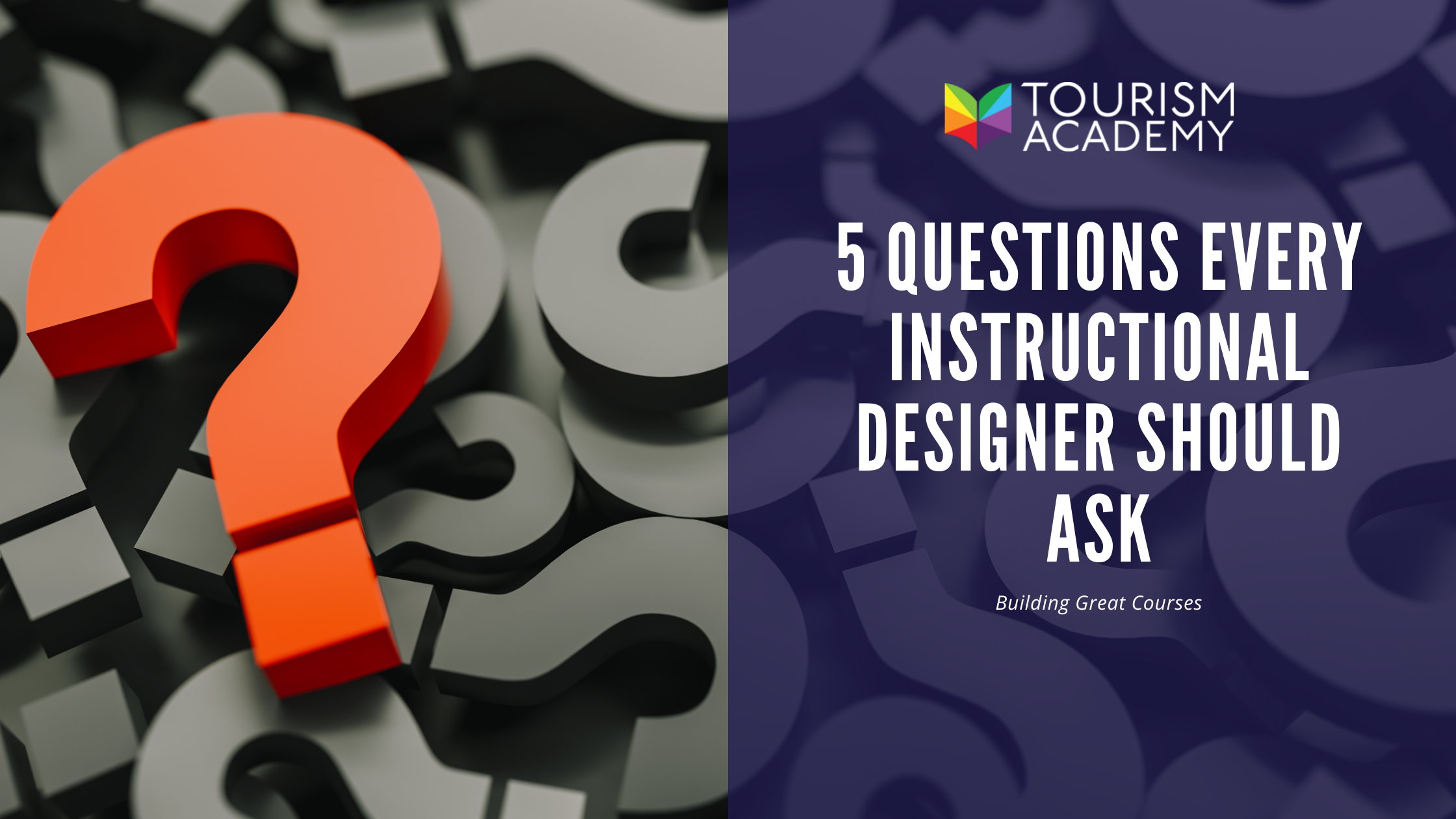
5 Questions Every Instructional Designer Should Ask
5 Questions Every Instructional Designer Should Ask
Who is the audience?
The audience you are writing for is very important. At any age or grade level, the learners want to know why they need to learn the material presented. The cognitive level of the learner is also important. Young learners need simple sentences and kid-friendly images and problems, and interactions cannot be too complex. In contrast, as the age of the learners increases, the complexity of the wording and interactions should increase. With adult learners, you also need to be careful not to use over-simplistic images and content, even if the material is at the elementary level.
What do the learners need to learn?
Learning objectives are the basis of any lesson developed by an instructional designer. They are the building blocks to the lesson. When developing a lesson, an instructional designer should always keep in mind what the objectives are and ensure that the lesson is addressing them. It’s easy to insert material that is interesting but not relevant to the objectives, but this extra material can be confusing and override the truly important objectives of the lesson. Throughout the development process, an instructional designer should be asking themselves, “How does this content relate to the objectives?”
RELATED: 70+ Instructional Designers Ready To Help You
How will the learners be presented with the material?
The instructional designer needs to understand the capabilities of the learning platform before designing the lesson. There’s nothing more frustrating than creating a complex interaction and then having to redo the entire slide because the platform can’t produce the intended interactions.
The instructional designer should understand the following learning platform capabilities before beginning development:
-
The type of items available
-
multiple choice
-
multi-select
-
drag and drop
-
dropdown
-
short answer responses
-
-
How the item types work
-
Can an image be added to a drag and drop or multiple choice response?
-
Are there scoring capabilities with short answer responses?
-
Can audio be added to read the responses or question if the learner needs the item read aloud? (This is especially important with younger learners or learners with special needs.)
-
-
The ability to add and use multimedia
How will I motivate the learners to get them engaged with the material?
This is one of the most important questions to ask. If the learners are not engaged with the material, they are not going to learn what is expected of them. Taking into account the first question about the audience of learners, instructional designers have the important role of deciding what will motivate the learners.
A few suggestions for motivating learners:
-
Incorporate interesting multimedia when available
-
Apply scenario-based learning (see Cathy Moore’s Site for ideas)
-
Change up the item type to make interactive items more interesting
-
Use color and images to enhance the information slides
-
Utilize 3-D animated characters to present the material
-
Develop simulations to promote learning by doing (see Smart Sparrow for ideas)
How will I know the learners understood the material?
Assessment is very important throughout a learning experience. Not only should an instructional designer be sure to check knowledge periodically to ensure the learner is progressing through the course, but the types of assessment are important. Developing effective assessments is integral to the learning process.
A few questions to ask while developing lesson assessments:
-
Big picture: Are all of the items testing the intended learning objectives or are there items that are not needed?
-
Does the interaction with an item allow the learner to demonstrate learning or is it easy for the learner to guess or game the system?
-
Are the directions clear and the interactions easy enough for the learner to understand what is expected on the assessment item?
-
Is this the best method for assessing this concept?
-
How can the data be shown in a way that helps both the learners and the teacher?
Throughout the development of any learning materials an instructional designer should be asking themselves, “Is everything in the lesson helping the learner understand the intended objectives?” Designing a lesson should be an iterative process of making sure the learner will be able to learn and demonstrate understanding of the material.
Need help designing & building your course? Check this out!

Leave a comment